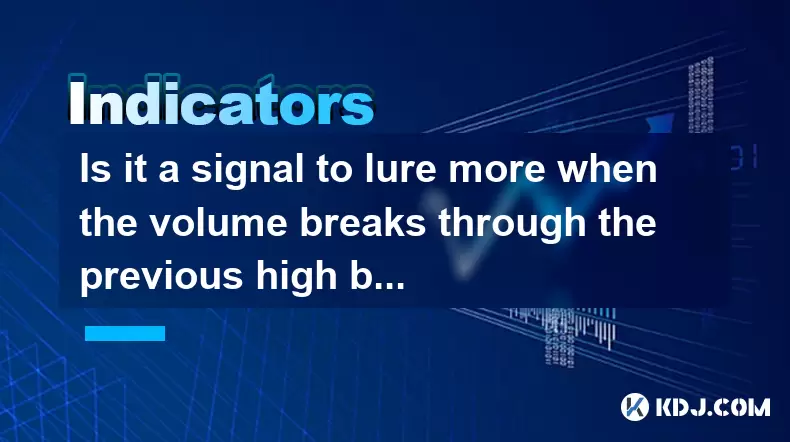-
 Bitcoin
Bitcoin $118,209.3536
1.16% -
 Ethereum
Ethereum $3,151.7546
5.98% -
 XRP
XRP $2.9277
2.35% -
 Tether USDt
Tether USDt $1.0000
0.00% -
 BNB
BNB $689.7099
1.26% -
 Solana
Solana $163.4270
1.91% -
 USDC
USDC $1.0000
0.02% -
 Dogecoin
Dogecoin $0.1983
3.74% -
 TRON
TRON $0.3008
0.51% -
 Cardano
Cardano $0.7435
2.86% -
 Hyperliquid
Hyperliquid $47.6547
-0.48% -
 Stellar
Stellar $0.4625
2.79% -
 Sui
Sui $3.9921
2.71% -
 Chainlink
Chainlink $16.0608
4.23% -
 Hedera
Hedera $0.2348
1.56% -
 Bitcoin Cash
Bitcoin Cash $496.6985
1.25% -
 Avalanche
Avalanche $21.9038
5.41% -
 UNUS SED LEO
UNUS SED LEO $8.8356
-1.88% -
 Shiba Inu
Shiba Inu $0.0...01364
5.31% -
 Toncoin
Toncoin $3.1102
4.35% -
 Litecoin
Litecoin $95.9756
3.59% -
 Polkadot
Polkadot $4.0925
5.78% -
 Monero
Monero $333.7622
-1.44% -
 Uniswap
Uniswap $9.1968
2.25% -
 Bitget Token
Bitget Token $4.6378
6.23% -
 Pepe
Pepe $0.0...01282
6.77% -
 Dai
Dai $1.0002
0.03% -
 Ethena USDe
Ethena USDe $1.0005
0.00% -
 Aave
Aave $329.9143
4.49% -
 Bittensor
Bittensor $441.4995
6.89%
Is it a signal to lure more when the volume breaks through the previous high but the closing falls?
A surge in crypto trading volume with a falling closing price may signal profit-taking, manipulation, or distribution, especially if it occurs near resistance or in low-cap altcoins.
Jun 29, 2025 at 07:28 pm

Understanding Volume and Price Behavior in Cryptocurrency Trading
In the world of cryptocurrency trading, volume and price are two of the most critical indicators used to assess market sentiment. Volume refers to the total number of coins traded over a specific period, while price reflects the value at which those coins are exchanged. When volume spikes significantly—especially when it breaks through a previous high—it often signals strong interest from traders or investors.
However, if the closing price falls despite this surge in volume, it raises questions about the nature of that buying or selling pressure. This phenomenon can be interpreted in different ways depending on the context, such as market structure, order flow, and trader psychology. The key lies in understanding whether this divergence is a sign of accumulation, distribution, or manipulation.
Important: In crypto markets, where volatility is common and liquidity can shift rapidly, interpreting volume must always be done in tandem with price action and other technical tools.
What Happens When Volume Surpasses Previous Highs?
When volume surpasses a prior peak, it typically indicates heightened activity in the asset. In many cases, this can precede a breakout in price, either upward or downward. However, not all high-volume days lead to clear directional moves. Sometimes, even with significant volume, the price may close lower than its opening level.
This kind of behavior can occur for several reasons:
- Large whale transactions taking place off-exchange but recorded on-chain.
- FOMO-driven retail buying followed by quick profit-taking.
- Manipulation via wash trading or spoofing orders to create artificial volume.
It's crucial to differentiate between real volume (organic trades) and manipulated volume (fake or incentivized trades). Many altcoins suffer from inflated volume metrics due to exchanges inflating their statistics to attract more users.
Important: Always cross-check volume data using platforms like CoinGecko or CoinMarketCap, which filter out fake volumes.
Why Does the Closing Price Fall Despite High Volume?
A drop in closing price despite high volume can signal various scenarios:
- Profit-taking after a rally: Traders who bought earlier may be selling off their holdings once they see increased participation.
- Bearish engulfing patterns: A candlestick pattern where a large bullish candle is followed by a larger bearish one, indicating reversal potential.
- Distribution phase: Smart money or whales might be selling into strength created by retail buyers.
In such situations, the market might be setting up for a pullback or consolidation phase. If this occurs near resistance levels or after a substantial run-up, it could indicate that sellers are regaining control.
Important: Look for signs of rejection at key resistance levels—such as long upper wicks or dark cloud cover candlesticks—to confirm weakening momentum.
Is It a Lure to Attract More Buyers?
The scenario described—where volume surges past previous highs but price closes lower—can indeed act as a lure for new buyers. Here’s how:
- False breakouts: The sudden spike in volume and price may trigger stop-losses or automated trading bots, drawing in more participants.
- Psychological traps: Retail traders seeing rising volume and initial gains may jump in, only to find themselves stuck when the price reverses.
- Liquidity absorption: Large players may absorb available buy orders before pushing the price in the opposite direction.
This kind of behavior is commonly observed in low-cap cryptocurrencies, where large holders (whales) can manipulate the market relatively easily compared to major assets like Bitcoin or Ethereum.
Important: Watch for sudden spikes in volume without corresponding price increases—they can be early warnings of manipulative tactics.
How to Analyze This Scenario Step-by-Step
To better understand whether the situation described is a lure or a genuine signal, follow these steps:
- Check the chart time frame: Is this happening on a daily, hourly, or 15-minute chart? Shorter time frames are more prone to noise and manipulation.
- Identify support and resistance levels: Is the price near a key psychological or historical level? If so, the reaction might be stronger.
- Analyze candlestick patterns: Look for signs of rejection, indecision, or engulfing formations around the volume spike.
- Compare volume with average volume: If the spike is significantly higher than usual, it may warrant closer attention.
- Use on-chain analytics: Platforms like Glassnode or Santiment can provide insights into real-time chain activity, helping distinguish real from fake volume.
Important: Never rely solely on volume or price alone. Combine them with on-chain data, order book depth, and macro-level sentiment analysis for a comprehensive view.
Frequently Asked Questions
Q: Can I use volume alone to make trading decisions in crypto?
No, volume should never be used in isolation. It must be analyzed alongside price movement, chart patterns, and possibly on-chain metrics to form a complete picture.
Q: How do I know if the volume is manipulated?
You can check third-party platforms like CoinGecko or CoinMarketCap that audit exchange volumes. Also, look for discrepancies between price and volume trends—real volume usually supports meaningful price moves.
Q: Should I sell immediately if price drops after a volume spike?
Not necessarily. It depends on your strategy and risk tolerance. Some traders wait for confirmation of a trend reversal before exiting positions. Use stop-loss orders and trailing stops to manage exposure.
Q: Are certain cryptocurrencies more prone to this kind of volume-price divergence?
Yes, smaller-cap altcoins with less liquidity and fewer institutional participants are more vulnerable to such anomalies. Major cryptocurrencies like BTC and ETH tend to have more organic volume and price correlation.
Disclaimer:info@kdj.com
The information provided is not trading advice. kdj.com does not assume any responsibility for any investments made based on the information provided in this article. Cryptocurrencies are highly volatile and it is highly recommended that you invest with caution after thorough research!
If you believe that the content used on this website infringes your copyright, please contact us immediately (info@kdj.com) and we will delete it promptly.
- XRP Price: Higher Lows Hint at Potential Trend Shift?
- 2025-07-16 15:10:12
- Bitcoin, Crypto Casinos, and Bonuses: A New Yorker's Guide to Hitting the Jackpot
- 2025-07-16 15:15:12
- Bitcoin, Deutsche Bank, and Mainstream Adoption: A New Era?
- 2025-07-16 14:30:13
- Bitcoin's ETF Demand & Institutional Momentum: A NYC Perspective
- 2025-07-16 14:50:12
- Bitcoin's Bullish Run: Demand Surges, Correction Unlikely?
- 2025-07-16 12:30:12
- JPMorgan, Blockchain, and Stablecoins: A Wall Street Revolution?
- 2025-07-16 14:50:12
Related knowledge

Advanced RSI strategies for crypto
Jul 13,2025 at 11:01am
Understanding the Basics of RSI in Cryptocurrency TradingThe Relative Strength Index (RSI) is a momentum oscillator used to measure the speed and chan...

Crypto RSI for day trading
Jul 12,2025 at 11:14am
Understanding RSI in the Context of Cryptocurrency TradingThe Relative Strength Index (RSI) is a momentum oscillator used to measure the speed and cha...

Crypto RSI for scalping
Jul 12,2025 at 11:00pm
Understanding RSI in the Context of Crypto TradingThe Relative Strength Index (RSI) is a momentum oscillator widely used by traders to measure the spe...

What does an RSI of 30 mean in crypto
Jul 15,2025 at 07:07pm
Understanding RSI in Cryptocurrency TradingRelative Strength Index (RSI) is a momentum oscillator widely used in cryptocurrency trading to measure the...

What does an RSI of 70 mean in crypto
Jul 13,2025 at 06:07pm
Understanding the RSI Indicator in Cryptocurrency TradingThe Relative Strength Index (RSI) is a widely used technical analysis tool that helps traders...

Does RSI work in a bear market for crypto
Jul 16,2025 at 01:36pm
Understanding RSI in Cryptocurrency TradingThe Relative Strength Index (RSI) is a momentum oscillator used by traders to measure the speed and change ...

Advanced RSI strategies for crypto
Jul 13,2025 at 11:01am
Understanding the Basics of RSI in Cryptocurrency TradingThe Relative Strength Index (RSI) is a momentum oscillator used to measure the speed and chan...

Crypto RSI for day trading
Jul 12,2025 at 11:14am
Understanding RSI in the Context of Cryptocurrency TradingThe Relative Strength Index (RSI) is a momentum oscillator used to measure the speed and cha...

Crypto RSI for scalping
Jul 12,2025 at 11:00pm
Understanding RSI in the Context of Crypto TradingThe Relative Strength Index (RSI) is a momentum oscillator widely used by traders to measure the spe...

What does an RSI of 30 mean in crypto
Jul 15,2025 at 07:07pm
Understanding RSI in Cryptocurrency TradingRelative Strength Index (RSI) is a momentum oscillator widely used in cryptocurrency trading to measure the...

What does an RSI of 70 mean in crypto
Jul 13,2025 at 06:07pm
Understanding the RSI Indicator in Cryptocurrency TradingThe Relative Strength Index (RSI) is a widely used technical analysis tool that helps traders...

Does RSI work in a bear market for crypto
Jul 16,2025 at 01:36pm
Understanding RSI in Cryptocurrency TradingThe Relative Strength Index (RSI) is a momentum oscillator used by traders to measure the speed and change ...
See all articles

























































































